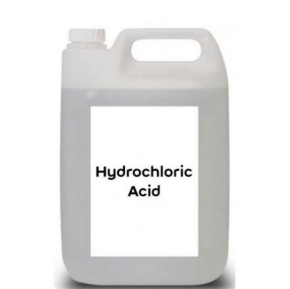
What is lime bloom and how can you get rid of it?
Lime bloom results from the intolerance of cement in certain conditions, according to Saint-Gobain Weber, this can be solved by the use of a hydrochloric masonry cleaner.
Where general lightening or patchiness on coloured cement products, that are otherwise sound and fully cured, seems to disappear when dampened with water, this is an indicator that the material has been affected by lime bloom.
Lime bloom does not result from a fault in the product but rather from the intolerance of cement to certain conditions during its early stage of hydration.
BS 5262 Code of practice for external renderings clauses 34.1 and 47 confirm that lime bloom is a phenomenon that sometimes affects cement products. This occurs more often when these products are subjected to damp conditions, and or low temperatures during early curing, the resulting thin film of what is basically lime on the surface of the product, does not affect the integrity or strength of the material.
 Use a hydrochloric masonry cleaner
Use a hydrochloric masonry cleaner
The effect of lime bloom, also referred to as efflorescence, is initially unsightly, but will weather away naturally over a period of time providing that the elevations are exposed to the elements. This weathering process may be accelerated by washing the affected area with a mild hydrochloric acid cleaner used under controlled conditions. Weber does not manufacture a hydrochloric cleaner, but recommends a product with a strength of between 16% and 20% w/w.
1. Dampen down or soak the area to be treated with clean water (this avoids the cleaner being drawn into the surface of the material).
2. Using a brush (not wire) apply the cleaner over the whole of the affected area. On vertical surfaces work from the bottom up, avoiding runs.
3. Allow the hydrochloric acid brick cleaner to act for 10 minutes.
4. Thoroughly rinse off with clean water, working from the top down on vertical surfaces.
Soft white bristle nylon brushes are best for application. Do not use metal containers. When using this product protect surrounding surfaces. It can be corrosive to metals including aluminium, chrome, copper, stainless steel and galvanised enamel, and may also mark materials, such as paint, leather and laminates. In certain cases you may need to apply more than one treatment to completely remove bloom from affected surfaces. Always treat the entire panel or elevation and not isolated areas. As a guide a 1 x 5ltr bottle of cleaner is sufficient for one application onto 20-30m² of render. On textured surfaces, coverage is reduced.
Latest news

17th April 2025
Nuaire shares expertise at Specifi Mechanical Services events in 2025
Indoor air quality and ventilation manufacturing specialist Nuaire is pleased to be exhibiting at the Specifi Mechanical Services events once again in 2025.
Posted in Air Conditioning, Articles, Building Industry Events, Building Industry News, Building Products & Structures, Building Services, Exhibitions and Conferences, Facility Management & Building Services, Heating, Ventilation and Air Conditioning - HVAC, Restoration & Refurbishment, Retrofit & Renovation
15th April 2025
West Fraser: CaberDek earns top marks from Home Counties carpentry specialist
A specialist carpentry sub-contractor covering housing sites across a large swathe of the Home Counties has come to value CaberDek from the West Fraser range for a variety of reasons: not least because the high quality panel product doesn’t destroy his operatives’ electric saws!
Posted in Articles, Building Industry News, Building Products & Structures, Building Systems, Case Studies, Restoration & Refurbishment, Retrofit & Renovation, Roofs, Timber Buildings and Timber Products, Wooden products
15th April 2025
GEZE: The Role of Access Control Systems in Enhancing Building Safety
Jane Elvins, Specification and Business Development Manager at GEZE UK, delves into the role of access control systems in enhancing building safety…
Posted in Access Control & Door Entry Systems, Architectural Ironmongery, Articles, Building Industry News, Building Products & Structures, Building Services, Doors, Facility Management & Building Services, Health & Safety, Restoration & Refurbishment, Retrofit & Renovation, Security and Fire Protection
11th April 2025
Don’t Do a Dave! It’s Time to Lock FIT Show 2025 in Your Calendar!
It’s that time again – FIT Show is back! You could be forgiven for thinking there won’t be much new to see when FIT Show returns to the NEC from 29 April – 1 May. Wrong!
Posted in Articles, Building Industry Events, Building Industry News, Building Products & Structures, Building Services, Continuing Professional Development (CPD's), Exhibitions and Conferences, Information Technology, Innovations & New Products, Restoration & Refurbishment, Retrofit & Renovation, Seminars, Training
 Sign up:
Sign up: